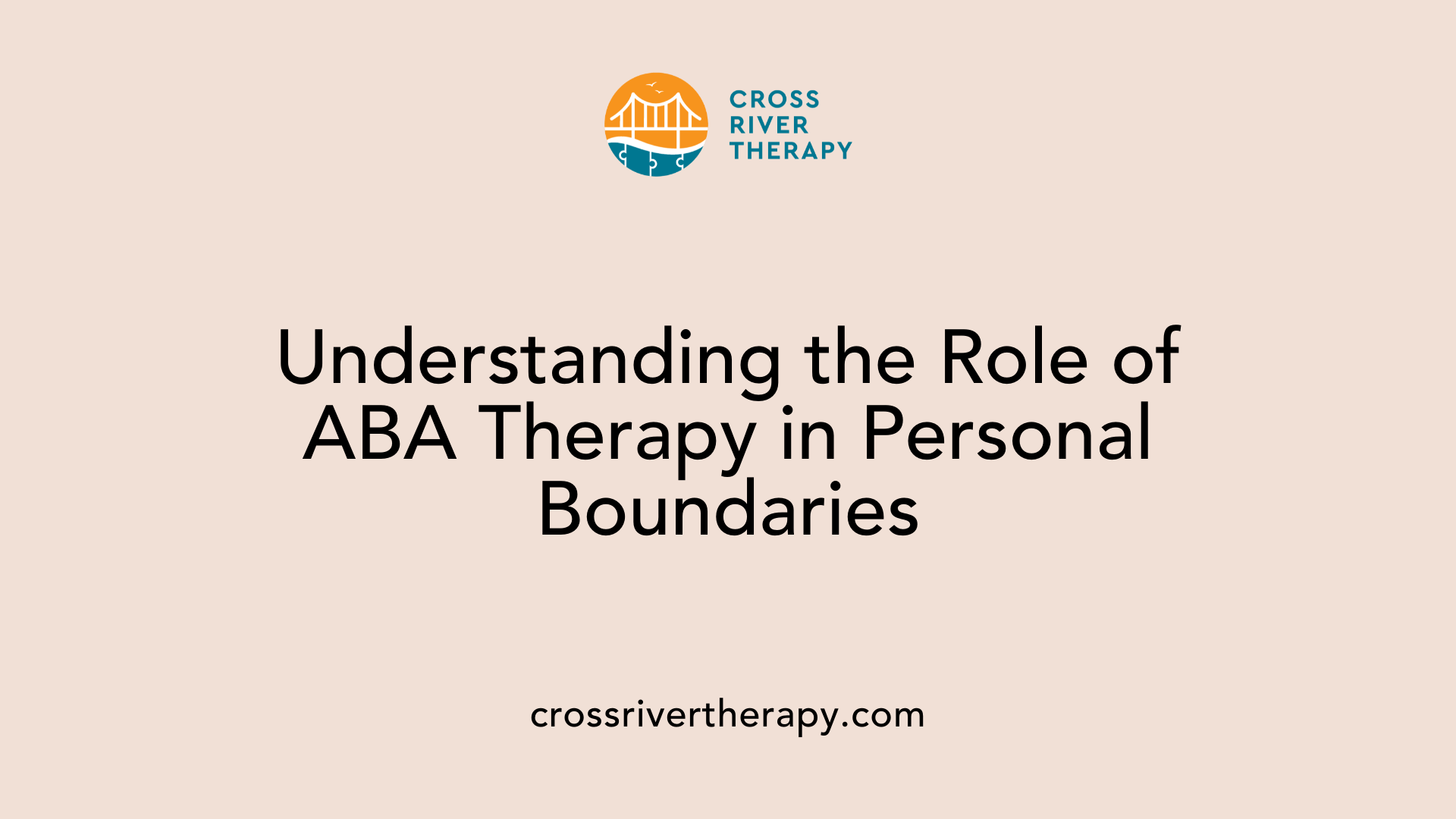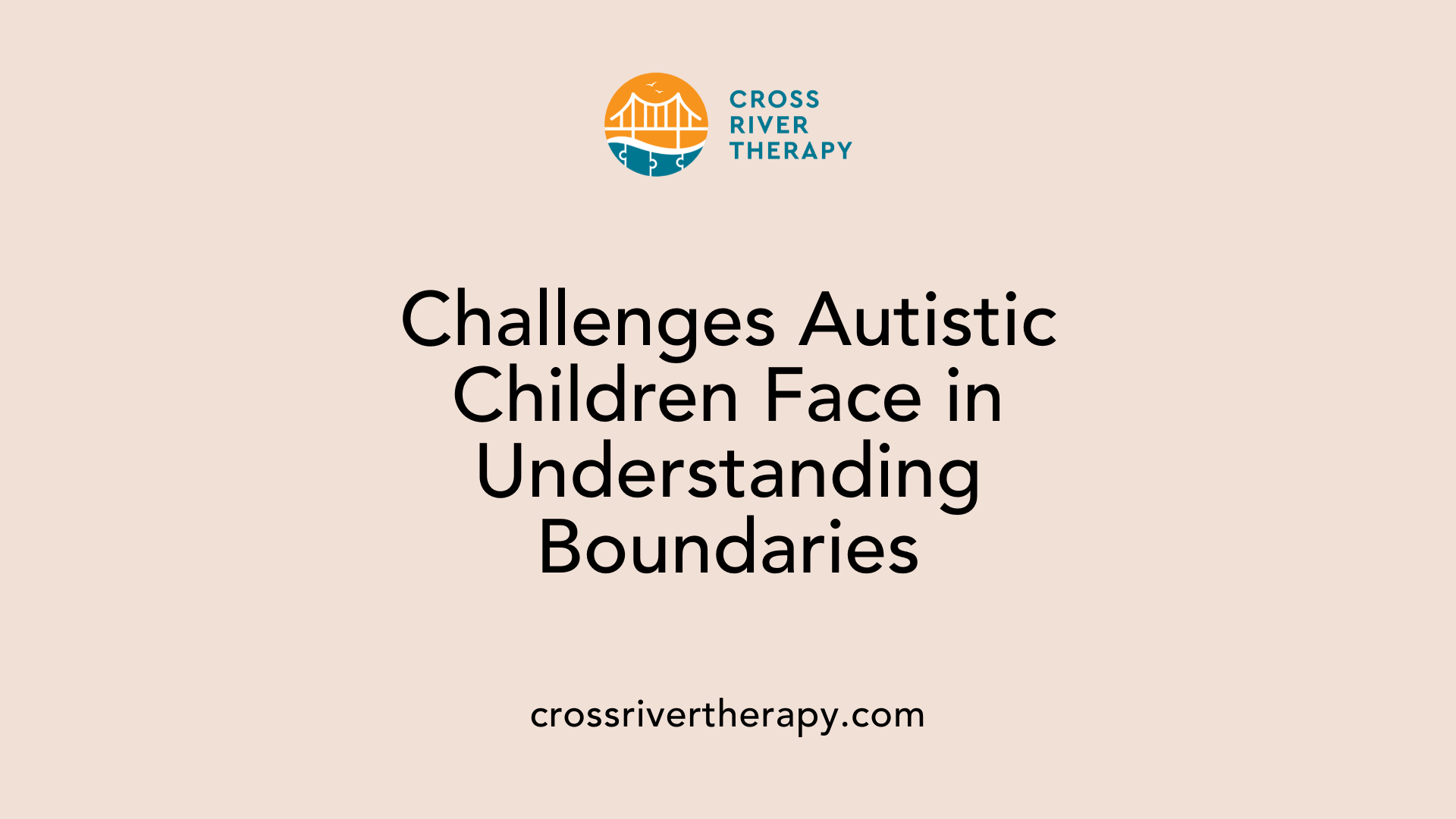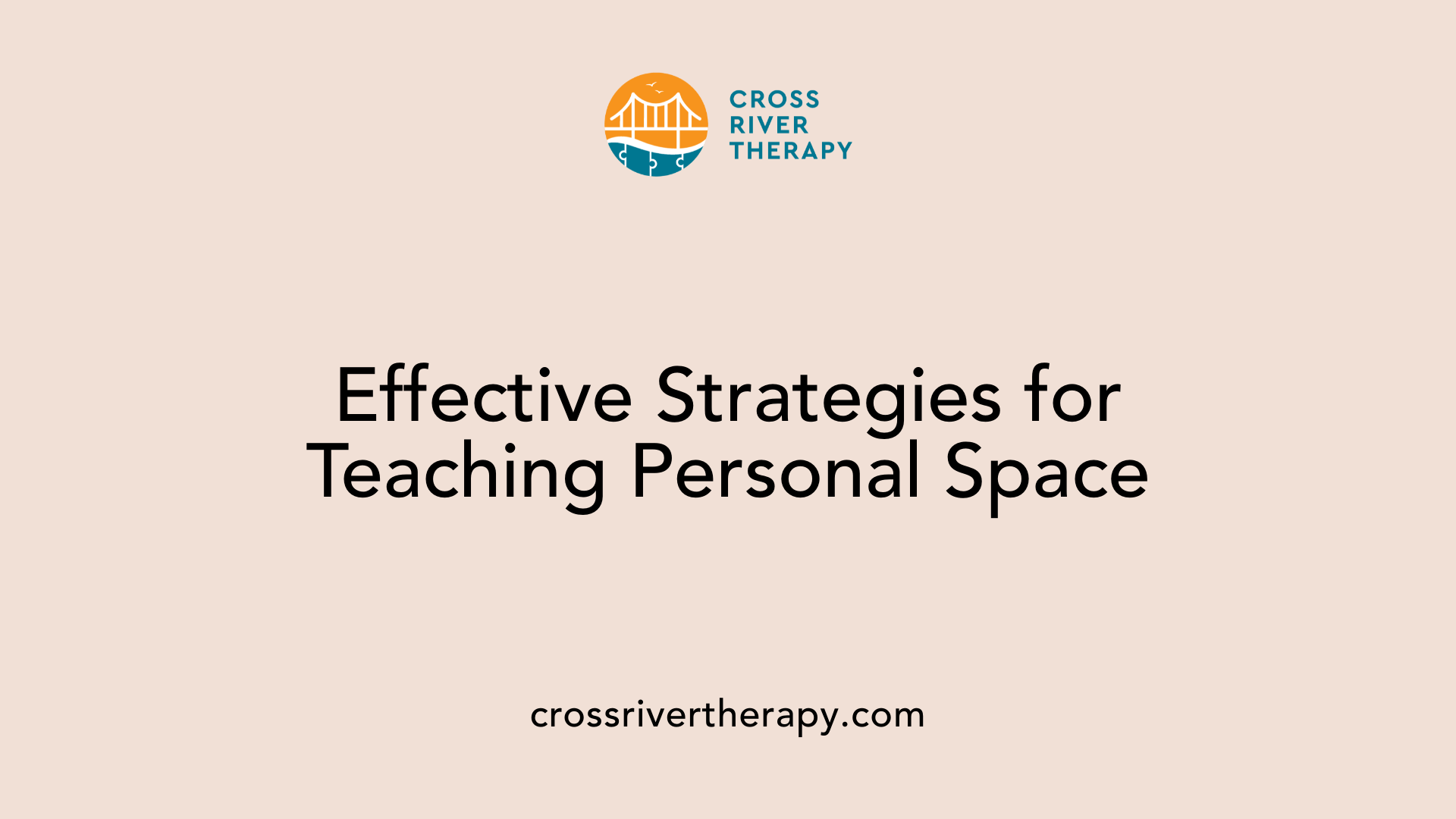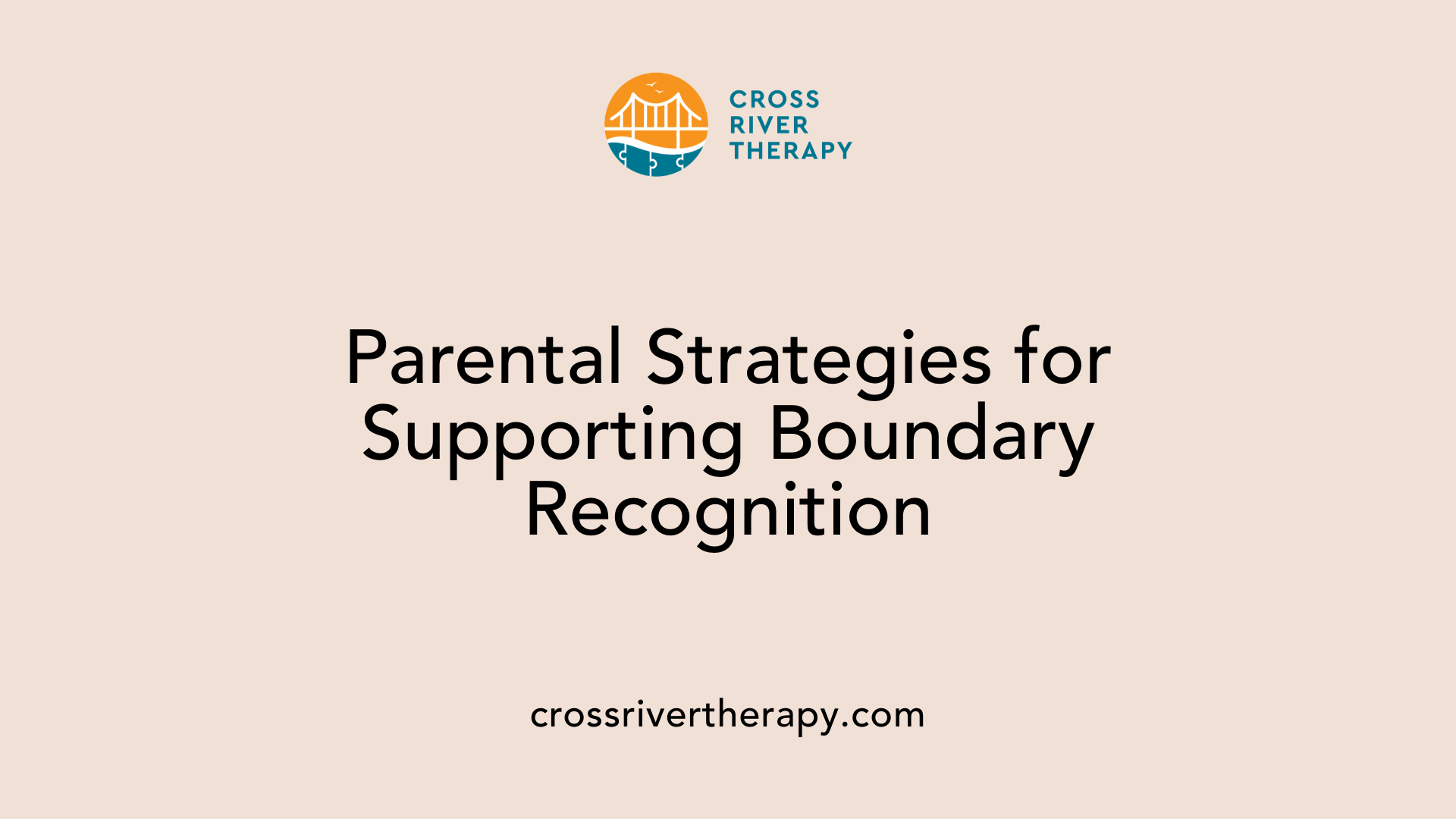How ABA Therapy Supports Children in Understanding Personal Boundaries
Exploring the Role of ABA Therapy in Enhancing Personal Boundaries for Children with Autism
Understanding the Intersection of ABA Therapy and Personal Boundaries
Applied Behavior Analysis (ABA) therapy plays a pivotal role in supporting children with autism to understand and respect personal boundaries. This therapy employs structured techniques and evidence-based strategies to help children develop the necessary skills for social interactions. Understanding personal boundaries is crucial for the social and emotional well-being of autistic children, aiding them in navigating a world full of cues and expectations. This article delves into how ABA therapy facilitates this crucial learning curve and offers practical insights for parents and caregivers.
The Fundamental Role of ABA Therapy in Enhancing Personal Boundaries

How can ABA therapy help improve personal boundaries for children with autism?
ABA (Applied Behavior Analysis) therapy is crucial for enhancing personal boundaries among children with autism. By employing structured techniques, ABA provides children with the tools needed to navigate social interactions effectively.
One of the core advantages of ABA is the establishment of structure and predictability in learning about personal space. This can significantly alleviate anxiety in social situations, allowing children to focus on understanding the nuances of personal boundaries.
Modeling behavior and positive reinforcement
Modeling appropriate behaviors is another integral component of ABA. Caregivers and therapists demonstrate what good interactions look like. Through role-playing, children practice maintaining personal space and recognizing when their boundaries are being crossed.
Positive reinforcement plays a pivotal role in this process. When children successfully respect personal boundaries or respond appropriately to social cues, they receive specific praise. This encourages them to internalize these lessons and fosters confidence in their ability to maintain personal boundaries in various social settings.
Tools and scenarios used in ABA
ABA therapy also utilizes various tools to enhance learning. Social stories and visual supports, like PECS cards, effectively illustrate concepts of personal space. These visuals help children better understand when and how to interact with others appropriately.
In addition, role-playing scenarios allow children to practice their skills in a safe, controlled environment, reinforcing their understanding of social norms and personal boundaries. As they engage in these interactions, they learn to become advocates for their own comfort, thus building trust and improving relationships.
In conclusion, ABA therapy not only benefits children with autism by teaching them about personal boundaries but also supports emotional regulation, encouraging positive social interactions and strengthening their self-esteem.
Challenges Faced by Autistic Children in Understanding Boundaries

Do children with autism struggle with understanding boundaries?
Yes, children with autism often face significant challenges when it comes to understanding and respecting personal boundaries. These challenges frequently stem from difficulties in social interaction and communication.
For many autistic individuals, social norms can feel abstract or confusing, making it hard to recognize what constitutes appropriate behavior in various contexts. For example, they might not intuitively understand the physical space people require in a social setting. This can lead to misunderstandings and uncomfortable social situations, causing distress both for them and others around them.
To support autistic children in recognizing boundaries, consistent and clear communication strategies can be instrumental. Using straightforward phrases such as "What is mine is mine, what is yours is yours" helps solidify concepts of ownership and personal space. This kind of foundational education fosters understanding and awareness, enabling children to navigate their social environments more effectively.
Furthermore, parents play a crucial role in this learning process. By encouraging honest communication about personal space and promoting trust, caregivers can help their children foster deeper relationships. Through ongoing support, autistic children can learn to navigate social boundaries, reducing feelings of loneliness and social anxiety in the process.
Strategies to Teach Personal Space and Boundary Recognition

What strategies can help an autistic child understand personal space?
To effectively teach autistic children about personal space, various strategies can be utilized that cater to their unique learning styles.
1. Role-playing and Social Stories
Social stories can be powerful tools. They break down scenarios involving personal space into manageable narratives, making it easier for children to grasp the concept. Role-playing further reinforces this by allowing children to simulate real-life situations, practicing how to interact while maintaining appropriate distances.
2. Visualization Techniques and Physical Markers
Using visual supports is another effective method. For instance, employing Picture Exchange Communication System (PECS) cards to illustrate boundaries helps children mentally visualize their personal space. Additionally, implementing physical markers such as hula hoops or even tape on the floor can offer a tangible representation of personal space during playtime activities. This interactive approach not only reinforces the concept but also makes learning enjoyable.
3. Consistent Feedback
Finally, positive reinforcement is crucial. Providing specific praise when a child recognizes and respects personal space helps solidify their understanding. With regular feedback and repetition, even abstract concepts like personal boundaries can become clearer and more manageable for children on the autism spectrum.
Building Body Awareness and Social Norms through ABA
How does ABA therapy assist in teaching body awareness and social norms to children with autism?
Applied Behavior Analysis (ABA) therapy plays a pivotal role in enhancing body awareness and social norms among children with autism. Utilizing strategies such as peer training and role-playing, ABA helps children recognize and respond to social cues effectively. These methods promote a practical understanding of how to interact with their environment and peers appropriately.
Tools for Understanding Behavior
Key ABA techniques, including visual aids, create a richer learning experience. Tools like Social Behavior Mapping and Social Thinking concepts help children comprehend expected and unexpected behaviors in social situations. These techniques enable children to visually connect their actions with the responses of others, aiding in the development of discrimination skills vital for navigating social norms.
The Role of Caregivers
Caregivers significantly influence the effectiveness of these strategies. By modeling desired behaviors and using structured scripts, they provide a consistent framework that children can rely on when learning about body boundaries and social interactions. This guidance helps children feel more secure and reduces anxiety associated with engaging in social situations.
Importance of Cultural Awareness
Incorporating cultural awareness into these teachings is essential. It ensures that interventions resonate with the child’s background, fostering authentic self-expression. When children understand diverse perspectives, they are more likely to navigate social interactions successfully and build meaningful connections with others.
| Teaching Method | Description | Benefits |
|---|---|---|
| Peer training | Engaging children with peers in practice sessions. | Enhances social skills through collaborative interactions. |
| Role-playing | Simulating social situations for practice. | Allows children to rehearse responses in a safe environment. |
| Visual aids | Using tools like PECS cards for comprehension. | Improves understanding of personal boundaries visually. |
| Social Behavior Mapping | Illustrating the consequences of actions in context. | Helps to clarify expected vs. unexpected behaviors. |
| Caregiver involvement | Active engagement in teaching strategies. | Provides structure and support in social learning. |
Understanding body boundaries and social norms is crucial for children with autism, empowering them to interact confidently and respectfully in their social worlds.
Parental Strategies for Supporting Boundary Recognition

What effective strategies can parents use to support children in recognizing and respecting personal boundaries?
Parents can play a vital role in helping their children with autism understand personal boundaries. One important strategy is fostering empathy and self-awareness from an early age. This begins with encouraging children to express their feelings openly. When they do, it's essential to validate their choices about personal space. For instance, parents can help children articulate their discomfort or preferences, teaching them phrases like "Please stop" or "No, thank you" to assert their boundaries confidently.
How can role-playing refusal skills and setting home boundaries help?
Role-playing scenarios are an excellent method for children to practice refusal skills. Engaging children in mock situations allows them to rehearse how to communicate their comfort levels and understand the significance of consent in social interactions. Additionally, parents can model respectful behaviors and establish consistent boundaries at home, creating a safe environment that reinforces these lessons.
Setting up a designated safe space can help children understand the distinction between shared and personal spaces. Opportunities for diverse social interactions are also crucial; they promote awareness of social norms and boundaries, contributing to healthier relationships built on respect and consent.
By integrating these strategies, parents can effectively support their children's development in recognizing and respecting personal boundaries.
Integrating Visual Supports and Boundary Tools in Daily Life
Using PECS Cards and Hula Hoops
Visual supports are powerful tools for teaching children with autism about personal boundaries. The Picture Exchange Communication System (PECS) cards allow children to understand and communicate their feelings about space. For instance, a PECS card illustrating personal space can help a child express when someone is too close, reinforcing their comfort levels.
Engaging children with physical objects, like hula hoops, adds a fun element to learning about space. When children step inside a hula hoop, they physically experience their personal space, making the concept more tangible.
Creating Safe Spaces and Using Physical Cues
Designating safe spaces is crucial for teaching personal boundaries. These areas can provide children with a retreat when feeling overwhelmed, thereby promoting emotional regulation. A safe space distinguishes between personal comfort zones and shared areas, enhancing boundary understanding.
Incorporating physical cues, such as carpet squares during group activities, allows children to visualize their space during interactions with others. These methods not only reinforce learning but also encourage practice in real-life settings, solidifying their ability to respect and assert personal boundaries.
Promoting Healthy Interactions and Social Comfort

Positive Reinforcement
Positive reinforcement plays a crucial role in teaching children with autism about personal boundaries. Specifically, praising children for recognizing and respecting personal space encourages them to engage in appropriate social interactions. By celebrating their successes, caregivers reinforce the importance of maintaining boundaries, leading to improved comfort during social situations.
Engagement in Diverse Activities with Boundary Lessons
Incorporating fun and practical activities can effectively teach boundary concepts. For instance, using tactile tools like carpet squares or hula hoops during play helps children understand personal space in a hands-on manner. Role-playing scenarios allows children to practice navigating social situations while reinforcing the significance of personal boundaries through engaging methods. This multifaceted approach not only makes learning enjoyable but also promotes social skills essential for healthy interactions.
Empowering Autistic Children Through Understanding Boundaries
ABA therapy offers significant advantages for children with autism in understanding and respecting personal boundaries, improving their social interactions and self-awareness. Through structured interventions, such as role-playing, visual aids, and positive reinforcement, children learn crucial skills for navigating complex social situations. By incorporating these strategies into both therapy and daily life, parents and educators can provide continuous support for autistic children, fostering an inclusive, understanding environment where they can thrive.
References
- Learning about bodies and personal boundaries: autistic children
- Strategies for Teaching Boundaries Autism - - Eagles WIll ABA
- Teaching Autistic Children Personal Space And Boundaries
- Recognizing Boundary Issues in Autism Spectrum
- How ABA Therapy Enhances Social Skills in Children with ASD
- Establishing Boundaries and Autism: Essential Insights for Caregivers
- ABA and Social Thinking - The Autism Helper



